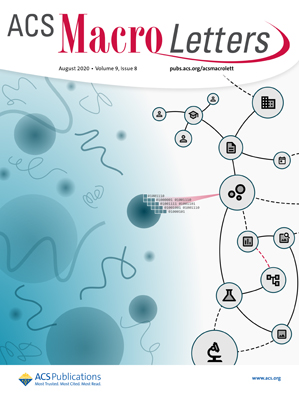通过大分子内氢键相互作用的快速链间电荷转移促进光催化制氢
IF 5.1
Q1 POLYMER SCIENCE
引用次数: 0
摘要
光敏剂与催化剂之间有效的电子传递是提高多组分体系光催化性能的关键。在传统的均相催化系统中,电子转移通常通过随机碰撞发生,这本身是低效的。虽然提出了各种战略来加强这一进程,但许多战略由于依赖高度集中而受到限制。在这里,我们报道了一种新的策略,在低浓度条件下显著增强了非贵金属络合物基均相体系的可见光驱动析氢反应(HER)。通过RAFT聚合,我们将铜PS (Cu-PS)和钴催化剂(Co-Cat)单元固定在含氨基甲酸酯键的聚合物链上。在悬垂链中引入氨基甲酸酯键,通过额外的氢键相互作用缩小了Cu-PS和Co-Cat中心之间的距离,从而在低浓度下具有较高的光催化活性。对比分析表明,含氨基甲酸酯键的聚合物配合物比不含氢键的聚合物配合物产氢量高20倍,而在24小时内不产氢。这项工作强调了含氢键的聚合物配合物在光催化活性方面的优势。鉴于RAFT聚合的多功能性和配体修饰的便利性,该方法在多组分光催化系统中具有广泛的适用性。本文章由计算机程序翻译,如有差异,请以英文原文为准。

Rapid Interchain Charge Transfer via Intra-macromolecular Hydrogen Bond Interactions Promotes Photocatalytic Hydrogen Production
Efficient electron transfer between photosensitizers (PS) and catalysts is essential for improving the photocatalytic performance of multicomponent systems. In conventional homogeneous catalytic systems, electron transfer typically occurs through random collisions, which are inherently inefficient. While various strategies have been proposed to enhance this process, many are limited by their dependence on high concentrations. Here, we reported a new strategy that significantly enhanced visible-light-driven hydrogen evolution reactions (HER) under low-concentration conditions for non-noble-metal-complex-based homogeneous systems. By employing RAFT polymerization, we immobilized copper PS (Cu-PS) and cobalt catalyst (Co-Cat) units on a carbamate-linkage-containing polymer chain. The introduction of carbamate linkages in the pendant chains closes the distance between the center of Cu-PS and Co-Cat by additional H-bond interactions, enabling high photocatalytic activity at low concentrations. Comparative analysis showed that the carbamate-linkage-containing polymeric complexes demonstrate a 20-fold hydrogen production over their non-H-bond polymeric complex, while no hydrogen was produced when using their small molecular counterparts in 24 h. This work underscores the superiority of the H-bond-containing polymeric complexes in photocatalytic activities. Given the versatility of RAFT polymerization and the ease of ligand modification, this method offers broad applicability across multicomponent photocatalytic systems.
求助全文
通过发布文献求助,成功后即可免费获取论文全文。
去求助
来源期刊
CiteScore
10.40
自引率
3.40%
发文量
209
审稿时长
1 months
期刊介绍:
ACS Macro Letters publishes research in all areas of contemporary soft matter science in which macromolecules play a key role, including nanotechnology, self-assembly, supramolecular chemistry, biomaterials, energy generation and storage, and renewable/sustainable materials. Submissions to ACS Macro Letters should justify clearly the rapid disclosure of the key elements of the study. The scope of the journal includes high-impact research of broad interest in all areas of polymer science and engineering, including cross-disciplinary research that interfaces with polymer science.
With the launch of ACS Macro Letters, all Communications that were formerly published in Macromolecules and Biomacromolecules will be published as Letters in ACS Macro Letters.

 求助内容:
求助内容: 应助结果提醒方式:
应助结果提醒方式:


